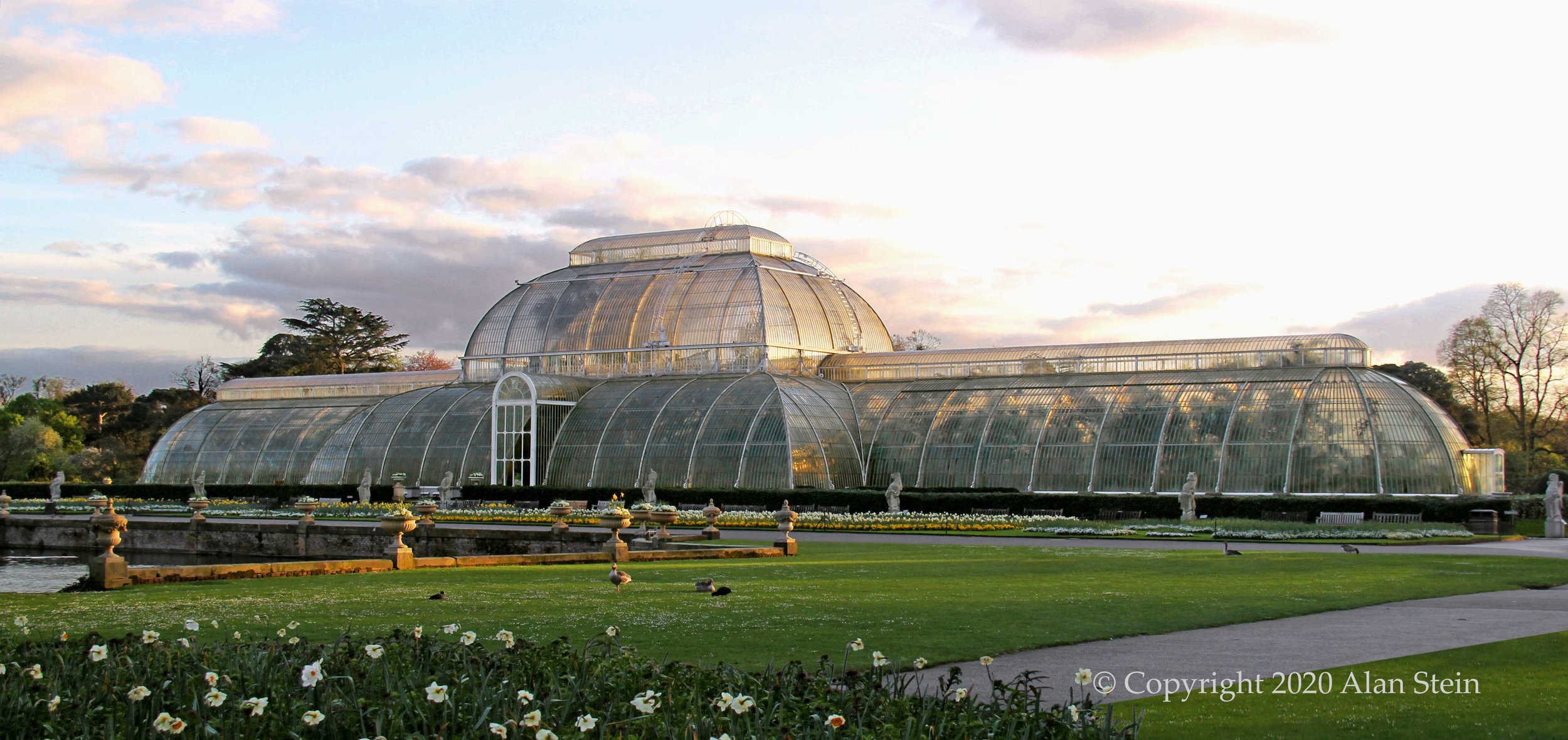
The Palm House
Royal Botanic Gardens at Kew, 1848, Architect: Decimus Burton (1800 - 1881)
As the British Empire delved into horticultural study, the need for a conservatory research space became apparent. Scientists aimed to use the conservatory to directly observe specimens and carry out nature-related research, in a rainforest-like climate. The conservatory was established as a center for study known as the Royal Botanic Gardens, Kew. This trend caught on and many glasshouses transformed from entertaining spaces to plant-filled research spaces.
In 1840, the Royal Botanic Gardens became England’s official botanical garden. It joined the ranks of similar botanical gardens in Holland, Sweden, Spain and France.
The Palm House at Kew Gardens was designed by Decimus Burton and constructed by Richard Turner in 1844. It was the first glasshouse built of this size, but Burton was no stranger to large glass houses after serving as a consultant for Joseph Paxton’s 1840 Great Conservatory at Chatsworth. Turner would go on to design the Curvilinear Range in Dublin, Ireland in 1869.
Architects used techniques borrowed from the ship building industry to construct the Palm House, which explains its almost-nautical shape. Architects also weren’t too sure how to handle the glass in conservatories at the time. The Palm House used to be green as Kew’s first curator, John Smith, thought “green glass panels would provide extra shade for the plants. But this actually caused many problems for plant growth, especially with the industrial pollution from the 1890s, and was later recognised as a mistake,” according to Kew.
Construction on the Palm House took just four years and was completed in 1848. The house is exceptional for the time period because of its innovative use of wrought iron in its construction. Wrought iron has properties more similar to steel than cast iron, like malleability and resistance.
Similar to Paxton’s Great Conservatory at Chatsworth, visitors can stroll around a top level walkway and look down on the verdant space from a birds-eye-view. Since its initial construction, the Palm House has been renovated twice. The first renovation was from 1955- 1957 and the second between 1983-1988. The second renovation completely disassembled, restored and rebuilt the structure. It also replaced the wrought iron structure with steel. Unlike the miles of underground pipework for Paxton’s “Great Stove at Chatsworth”, the Palm House is heated by a gas boiler that rotates hot water through pipes under paths and around the house itself. The temperature is maintained at 18º C, or 64º F.
Today, the Palm House is made up of 16,000 panes of toughened glass, some of which are specially curved. The windows are professionally cleaned every other year. The space is also home to the oldest potted plant in the world, the Encephalartos altensteinii, since 1775. The Royal Botanic Gardens continues to study plant specimens and make discoveries in the name of scientific exploration.
Photo Credits: Alan Stein

![03_Cons_ch3_029[1A]_copyright.jpg](https://images.squarespace-cdn.com/content/v1/5f11b7e4e3277041fd2580c6/573a7114-61ab-4495-9577-d2a5ef49f510/03_Cons_ch3_029%5B1A%5D_copyright.jpg)
![03_Cons_ch3_028[2B]_copyright.jpg](https://images.squarespace-cdn.com/content/v1/5f11b7e4e3277041fd2580c6/28608807-37ba-4b0f-8288-7f113c58599a/03_Cons_ch3_028%5B2B%5D_copyright.jpg)
![03_Cons_ch3_026[2C]_copyright.jpg](https://images.squarespace-cdn.com/content/v1/5f11b7e4e3277041fd2580c6/dc5ae833-66f8-4a4b-9684-c80512e9cd45/03_Cons_ch3_026%5B2C%5D_copyright.jpg)
![03_Cons_ch3_027[2C]_copyright.jpg](https://images.squarespace-cdn.com/content/v1/5f11b7e4e3277041fd2580c6/306a480c-95e9-4cde-a868-ac3dd231264d/03_Cons_ch3_027%5B2C%5D_copyright.jpg)